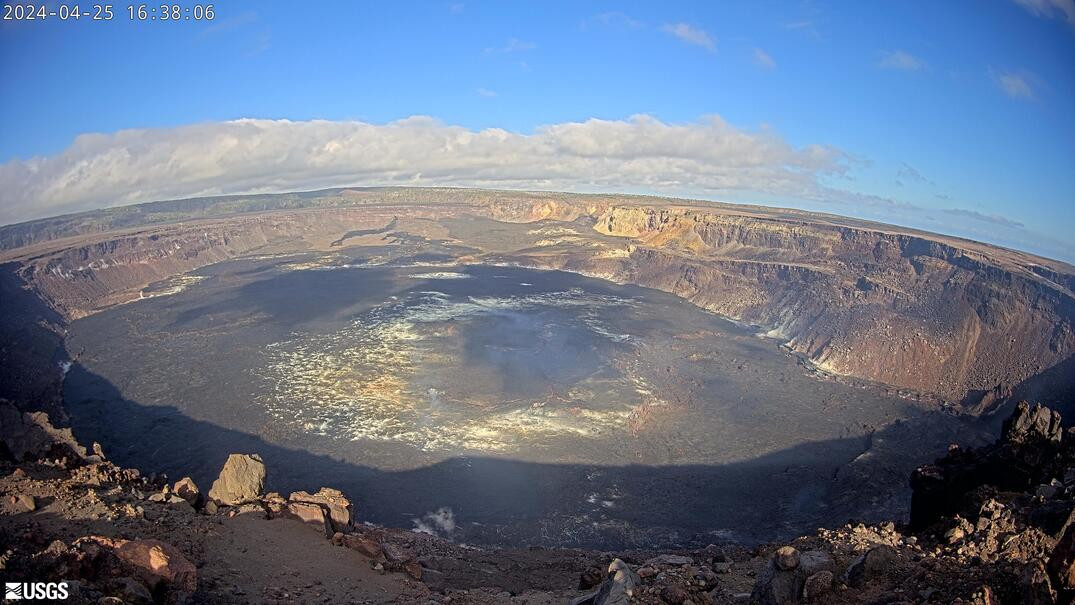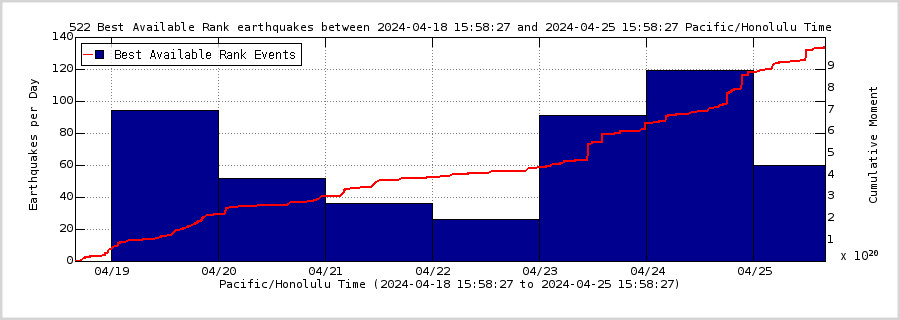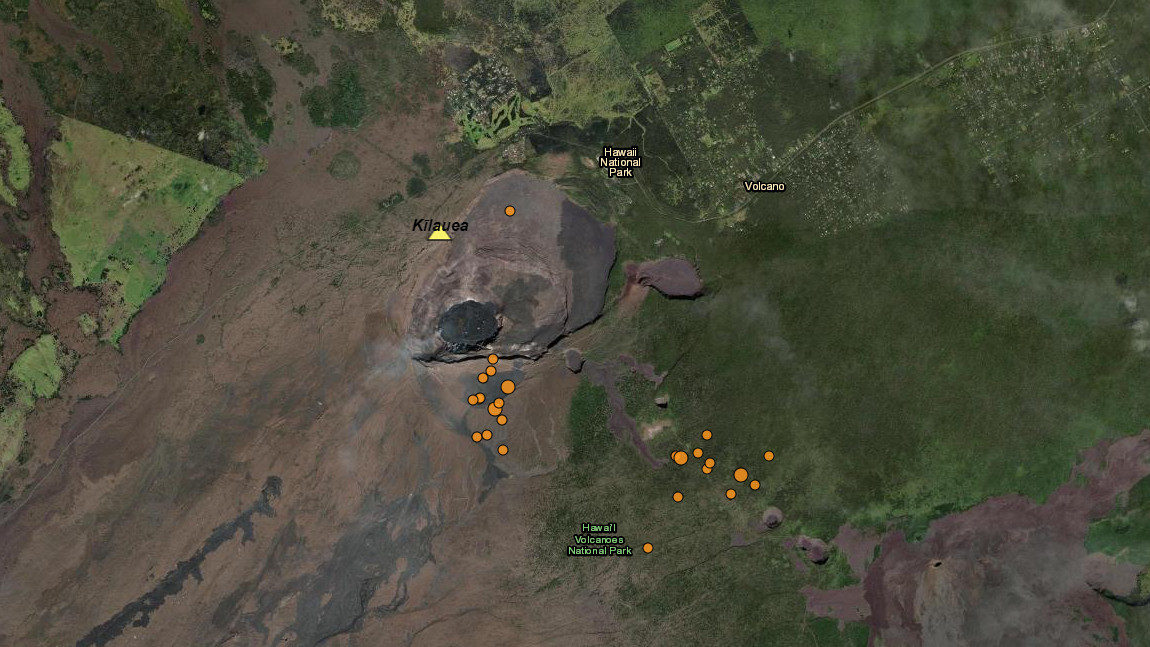(BIVN) – Kīlauea is not erupting, and scientists monitoring the Hawaiʻi island volcano continue to issue daily updates as a state of heightened activity has returned to the summit region over the past month.
On Thursday, the USGS Hawaiian Volcano Observatory reported shallow earthquakes have been occurring beneath the upper East Rift Zone over the past two days. As of now, the USGS Alert Level for Kīlauea remains at ADVISORY.

USGS webcam shows Halemaʻumaʻu and down-dropped caldera floor from the west rim of the summit caldera, looking east.
Scientists continue to say it is not known if the recent signs of unrest will lead to an eruption in the near future, adding that “an eruption in Kīlauea’s summit region, within Hawai‘i Volcanoes National Park and away from infrastructure, is one potential outcome.”
From Thursday’s update by the USGS HVO:
Summit Observations: Earthquake activity has increased over the past month beneath the summit of Kīlauea and south of the caldera. Activity has alternated between typical shallow, 0.5-2.5 miles (1-4 km) earthquakes beneath the south caldera region and 3-6 miles (5-10 km) deep earthquakes directly beneath Kīlauea caldera. Most of these earthquakes have been smaller than magnitude-2. Kīlaueaʻs summit remains inflated. Overall ground deformation rates remain low, with ongoing inflation of the summit and uplift south of the caldera. Tiltmeters near Sand Hill and Uēkahuna showed no significant changes over the past day. Sulfur dioxide (SO2) gas emission rates remain low. An SO2 emission rate of approximately 52 tonnes per day was recorded on April 23.

USGS graph shows earthquakes per day during the past week (blue bars). The red line is the cumulative moment (energy) release.
Rift Zone Observations: Seismicity in Kīlauea’s upper East Rift Zone and Southwest Rift Zone remains low overall. Shallow earthquakes, 0.5-2.5 miles (1-4 km) deep, have been observed beneath the upper East Rift Zone over the past two days. Most of these earthquakes have been smaller than magnitude-2. No unusual activity has been noted along the middle and lower sections of Kīlauea’s East Rift Zone. We continue to closely monitor both rift zones.
Measurements from continuous gas monitoring stations downwind of Puʻuʻōʻō in the middle East Rift Zone—the site of 1983–2018 eruptive activity—continue to be below detection limits for SO2, indicating that SO2 emissions Puʻuʻōʻō are negligible.
Analysis: Last Friday night’s earthquake swarm had a strong low frequency component indicating movement of magma within the summit system. This activity appears to have been deeper than normal activity that has preceded recent summit eruptions and HVO will continue to monitor the summit region closely. At this time, it is not possible to say with certainty if this renewed activity will lead to an eruption in the near future –or simply remain confined below ground. However, an eruption in Kīlauea’s summit region, within Hawai‘i Volcanoes National Park and away from infrastructure, is one potential outcome.


by Big Island Video News4:54 pm
on at
STORY SUMMARY
HAWAIʻI VOLCANOES NATIONAL PARK - Kīlauea volcano this month has returned to a state of heightened activity beneath the summit.